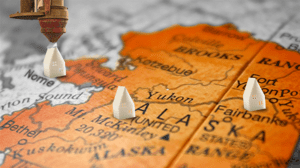In the next five years, the 3D printing industry is expected to grow by more than $13 billion — and the cash-strapped United States Postal Service could benefit from hopping on the trend.
A July 7 USPS Inspector General’s report said the Postal Service could bring in an additional $485 million in package revenue as businesses begin to ship more 3D-printed items. The assessment was performed by Christensen Associates, an economic consulting firm.
 3D printing could be a postal boon, according to a report from the independent agency’s OIG.
3D printing could be a postal boon, according to a report from the independent agency’s OIG.Source: USPS OIG
“The Postal Service could benefit tremendously by the rise of 3D printing,” the report said. “This is primarily due to two factors: the Postal Service’s ubiquitous first and last mile delivery network and its strength in handling lightweight goods.”
In order to achieve the benefits of 3D printing, USPS will need to maintain its existing delivery network. Despite the fact that 3D printing will allow products to be manufactured closer to the customer, the business will still need the last-mile delivery service from the Post Office, the report said.
According to the report, no other organization covers as much as ground as frequently and reliably as the Postal Service, which would aid on both sides of the 3D printing production process.
The report does recommend, however, that USPS take some further action to help aid the integration of 3D printed items into its postal network.
 USPS Facilities could serve as 3D printing hubs, according to a report from the USPS OIG.
USPS Facilities could serve as 3D printing hubs, according to a report from the USPS OIG.Source: USPS OIG
“For example, the Postal Service could partner with 3D printing companies and even potentially bring some printing onsite at postal facilities, as well as provide micro-warehousing to help ensure rapid shipment of 3D printed goods,” the report said.
Additionally, the postal service could use its services to protect copyrighted content. The report said the post office could develop a trusted online marketplace to allow the safe transmission of designs and integrate it with physical product transfers with carriers.
“This could bring a level of security, confidentiality, and privacy that the Internet cannot match,” the report said.
But the benefits of USPS’ involvement with 3D printing don’t end there – the report said the Postal Service could use 3D printing to improve internal operations by printing spare parts to repair vehicles and mail processing equipment. Just last month, the USPS IG chronicled the aging of the independent agency’s vehicle fleet.
“The 3D printing revolution has only just begun. 3D printing has the potential to be amazingly disruptive, and some people think the changes brought on by it will exceed even those of the Internet,” the report said. “While the Internet did much to overcome the challenges of time and distance by making everything local, 3D printing could take things to the next level by making on-demand products at any location. The question is, who will win from a 3D printing revolution and who will lose? By embracing this groundbreaking technology, the Postal Service could put a compelling 21st century twist on its historical mission to serve citizens and facilitate commerce.”






